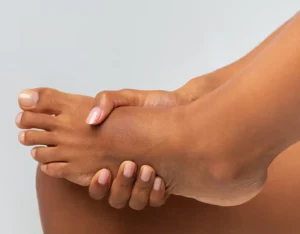There are many superstitions surrounding warts. You should talk to them or let a slug crawl over them under a full moon and they will disappear. In medical terms, the sudden coming and going can be explained as follows: the benign skin tumors are caused by a form of the human papilloma virus (HPV). And as with all viruses, the body is particularly susceptible to it when it is weak. Once the immune system is fit again, it can often fight back on its own – or with specialist help.
Ways of infection
More than 80 different types of HPV are known in medicine today and can cause very specific types of warts. Sometimes they penetrate the epithelial cells of the skin through direct contact with a wart. Sometimes it is an indirect infection that occurs, for example, when touching a doorbell or walking barefoot in a swimming pool. The risk is particularly high in wet rooms. This is because softened or injured skin is extremely susceptible to viruses penetrating it.
Different types
After weeks or months, a skin growth appears on the infected area, which may be a common verruca vulgares. They usually appear in childhood as raised, scaly lumps on the hands and feet. Flat warts (verrucae planae) are small, reddish papules on the face and back of the hands. There are also prickly, brush and thread warts, all of which are harmless and often disappear on their own. More unpleasant are deep, painful plantar warts on the soles of the feet. And sexually transmitted genital warts, which can degenerate into malignant tumors, require immediate treatment.
Individual treatment
In contrast to genital and plantar warts, other types of warts do not necessarily need to be treated. Unless they occur frequently or are perceived as aesthetically unpleasant. Icing with liquid nitrogen, electrical scabbing and regular removal by curettage are just as much a part of the treatment spectrum as laser, photodynamic and surgical therapy. Local therapies in the form of solutions, ointments or plasters with salicylic, lactic or acetic acid have also proven to be very effective. Re-infestation occurs from time to time, as the papilloma virus cannot always be completely destroyed.
If you notice warts on yourself or your children, it is best to come to us. In our specialist practice, we can determine the exact type and initiate targeted treatment.
Read more under: Classical dermatology




